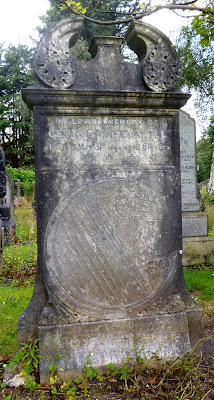Jean-Jacques Schuhl has only published four books in 43 years, of which Rose poussiére is the first. Now a cult book, its experimental nature resists easy interpretation: there is no 'story' as such but a series of observations, with a number of sections, some with lists, some containing or including two columns, several sentences containing a blank where a word should be, there is the music score of the Rolling Stones' song 'Complicated', etc.
The words 'Rose poussiére' refer to a kind of make-up, and although brand names are prominent in this book so are allusions to death, and the dust in the title is also a reference to the impermanence of life. In no particular order, I would list the following as some of the book's central themes:
death, the interchangeability of people, artificiality/falseness, emptiness, regimentation/uniformity, war, advertising, fame, robotic actions/mechanical repetition, impersonality, fashion, religion, etc.
The dust jacket is an integral part of the book (which is in Gallimard's Le Chemin series, and the front cover includes five black and white photos which are explained on the front flap with indications of the pages they appear in in the book:
1. A still of Marlene Dietrich in Joseph von Sternberg's film Shanghai Express (1932), in which she dresses in black with a transparent veil.
2. A toad vomiter 'dressed by Schiaparetti': the narrator later describes Mick Jagger as vomiting toads when he sings, although I'm unclear if it's Jagger's partly-obscured face that appears in the photo here, which is possibly a montage.
3. The face of the dead Bérénice Maranhao, buried in an earthquake in Brazil.
4. Brian Jones saying 'take the Iso Griffa (or Rivolta) and go and look for Miss Anita [Pallenberg] in West Berlin'.
5. The shop window display of Délicata Frères Orthopédie, 84 boulevard Saint-Germain, Paris.
(On the rear cover there is also a photo of 'Frankenstein-le-Dandy'.)
There is a wealth of juxtapositions, of which these are just a few:
The guards' boots at the beginning of the book looking like those in Délicata Frères Orthopédie.
The word dernier linking fashion and death because it can mean both 'latest' and 'last'.
'Faux cil' (false eyelash) in the title of one section being homophonous with 'faucille' (sickle as in 'hammer and ....').
The way the advent of sound to the cinema changed the way millions of people act, as did the advent of rock culture.
Fashion and religion.
The dead Lenin with make-up, like the rock stars and their fans.
The 'artificial' John A. B. C. Smith in Poe's 'The Man That Was Used Up' compared with Frankenstein.
Young girl fans at the Roundhouse, Chalk farm, making up their eyes with a coal product in this former railway environment.
Brian Jones's handcuffs and jewellery.
To a certain extent Rose poussiére is also a study of 'cool'*, which is vacuous: Marlene Dietrich in Shanghai Express calmly telling the police superintendent that the purpose of her visit is to buy a new hat; or the girls in Chelsea or South Kensington with deathly white skin and black round the eyes, staring into the void as they walk mechanically (but having slight imperfections such as an oil or mud stain on their clothes): the narrator then begins the first comparison with the spot-the-difference puzzles in France-Soir!)
The narrator is obviously fascinated by what he describes, although he also seems to be horrified. This is a book to be savoured, to take time over and interpreted as you may because the book is truly : leaving white spaces in place of words can become infectious.
* 'Cool' is a word Schuhl never mentions but is evidentally talking about, just as he refers to the colour black of make-up (and also of course death), but never – despite several Rolling Stones' songs cropping up – mentions the (all too obvious?) 'Paint It Black'.








































